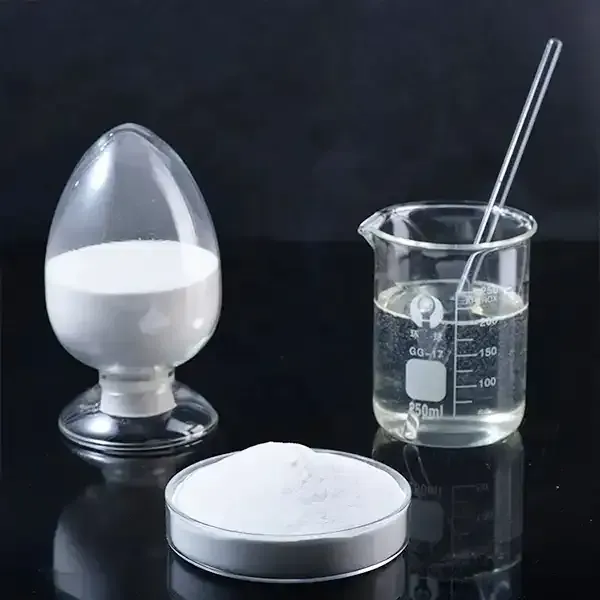Understanding Cellulose Ethers Structure, Properties, and Applications
Cellulose ethers are a group of biopolymers derived from cellulose through a chemical modification process. Cellulose, a natural polymer found in the cell walls of plants, is one of the most abundant organic compounds on Earth. It provides structural support to plants and is largely made up of glucose units linked together through beta-1,4-glycosidic bonds. The modification of cellulose into cellulose ethers enhances its properties, enabling its use in a wide range of applications across various industries.
Structure of Cellulose Ethers
Cellulose ethers are created when hydroxyl groups (-OH) in the cellulose molecule are replaced with ether groups, resulting in the formation of a more versatile compound. This modification can occur through different methods, including alkylation with alkyl halides and treatment with etherifying agents. Common types of cellulose ethers include methylcellulose (MC), hydroxypropyl methylcellulose (HPMC), ethylcellulose (EC), and carboxymethyl cellulose (CMC). Each type exhibits distinct physical and chemical characteristics based on the type of etherification that occurs and the degree of substitution—the average number of hydroxyl groups replaced per glucose unit.
Properties of Cellulose Ethers
Cellulose ethers possess unique properties that make them valuable in various applications. Their ability to swell in water and form viscous solutions is one of the most significant features. When water is added, the ether groups promote hydration, leading to thickening and stabilizing effects. Moreover, cellulose ethers display excellent film-forming abilities, providing barriers to gases and moisture, which is particularly useful in the food and packaging industries.
Another important property is their thermal and chemical stability, making them suitable for use in environments that require durability and resistance to degradation. They are also non-toxic, biodegradable, and biocompatible, which aligns with the growing demand for sustainable and eco-friendly materials. The amphiphilic nature of cellulose ethers—having both hydrophilic and hydrophobic regions—allows them to interact favorably in diverse environments, making them versatile in different formulations.
Applications of Cellulose Ethers
cellulose ethers

The utility of cellulose ethers spans multiple industries
1. Food Industry Cellulose ethers are commonly used as thickeners, stabilizers, and emulsifiers in food products. They enhance texture, improve mouthfeel, and increase the shelf life of various foods. Hydroxypropyl methylcellulose, for example, is often used in gluten-free baking to improve dough structure and moisture retention.
2. Pharmaceuticals In pharmaceuticals, cellulose ethers serve as excipients in tablets and capsules. They help control the release of active ingredients, thereby enhancing bioavailability and efficacy. Additionally, they are utilized in the formulation of gel-based dosage forms, wherein their thickening properties contribute to the stability and performance of the product.
3. Cosmetics and Personal Care Products Cellulose ethers are frequently incorporated into lotions, shampoos, and creams due to their thickening and emulsifying properties. They contribute to the texture and consistency of these products while also providing moisture retention and improving spreadability on skin and hair.
4. Construction In construction, cellulose ethers are used in cement and plaster formulations. They improve workability, enhance adhesion, and slow down the setting time, allowing for easier application and finishing of surfaces.
5. Agriculture In the agricultural sector, cellulose ethers are employed as soil conditioners and film-forming agents in controlled-release fertilizers. They help retain moisture and improve nutrient utilization in crops.
Conclusion
Cellulose ethers are an invaluable class of biodegradable polymers that have found extensive applications across countless industries due to their favorable properties. As the global demand for sustainable and environmentally friendly materials continues to rise, cellulose ethers are likely to play an increasingly significant role in developing innovative products and solutions. Their versatility, coupled with an ever-growing body of research into their properties and effects, underscores their position as crucial materials for the future. Understanding and harnessing the full potential of cellulose ethers will undoubtedly pave the way for advancements in both technology and sustainability.
-
Rdp Powder: Key Considerations for Wholesalers in the Building Materials IndustryNewsJul.08,2025
-
Key Considerations for Wholesalers: Navigating the World of Hpmc - Based ProductsNewsJul.08,2025
-
Hpmc Detergent: Key Considerations for WholesalersNewsJul.08,2025
-
Key Considerations for Wholesalers: China Hpmc For Tile Adhesive, Coating Additives, Concrete Additives, and MoreNewsJul.08,2025
-
Crucial Considerations for Wholesalers: Navigating the World of Construction MaterialsNewsJul.08,2025
-
Key Considerations for Wholesalers Sourcing Additive For Cement, Additive For Concrete, Additive For Putty from Additive Manufacturer Shijiazhuang Gaocheng District Yongfeng Cellulose Co., Ltd.NewsJul.08,2025




